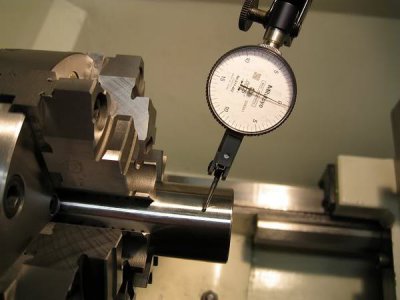Well, if you have confirmed that the spindle is parallel with the ways, independent of the tailstock, then the only real solution is to do a bit of scraping on the cross slide. Normally, more wear shows up on the -Z- axis, so it's likely where the problem originates if the cross slide was square with the Vee ways to begin with. Since most of the flat facing of any size where it might really make any difference is near the chuck, the cross slide ways would be my choice of a remedy. Recognize though, that as you move away from the chuck for longer parts, you may lose some of this squareness, provided the error was truly introduced in the -Z-axis. If you are doing a 100% accurizing of the machine, after the -Z- axis ways are dead on with the spindle, in both planes, then I would address the cross slide squareness. And then last, the tailstock for height and -X- axis position. Then for tailstock quill alignment. Some machines have a large pin the headstock pivots on, and people sometimes overlook this as an adjustment for spindle parallelism. If your machine has that provision, use it.
In reality, most of us won't be machining any plane mirrors, and the faces machined will be relatively narrow. It would be an extreme case where it would be a real concern. If it were, scraping/lapping would be in order. This is just my personal opinion, fwiw.


